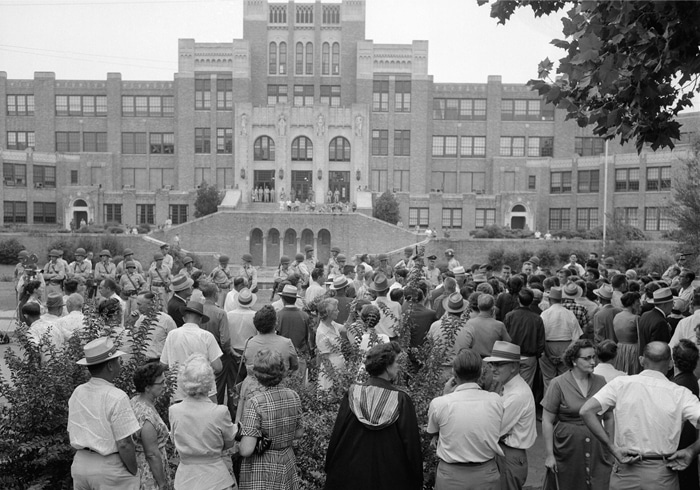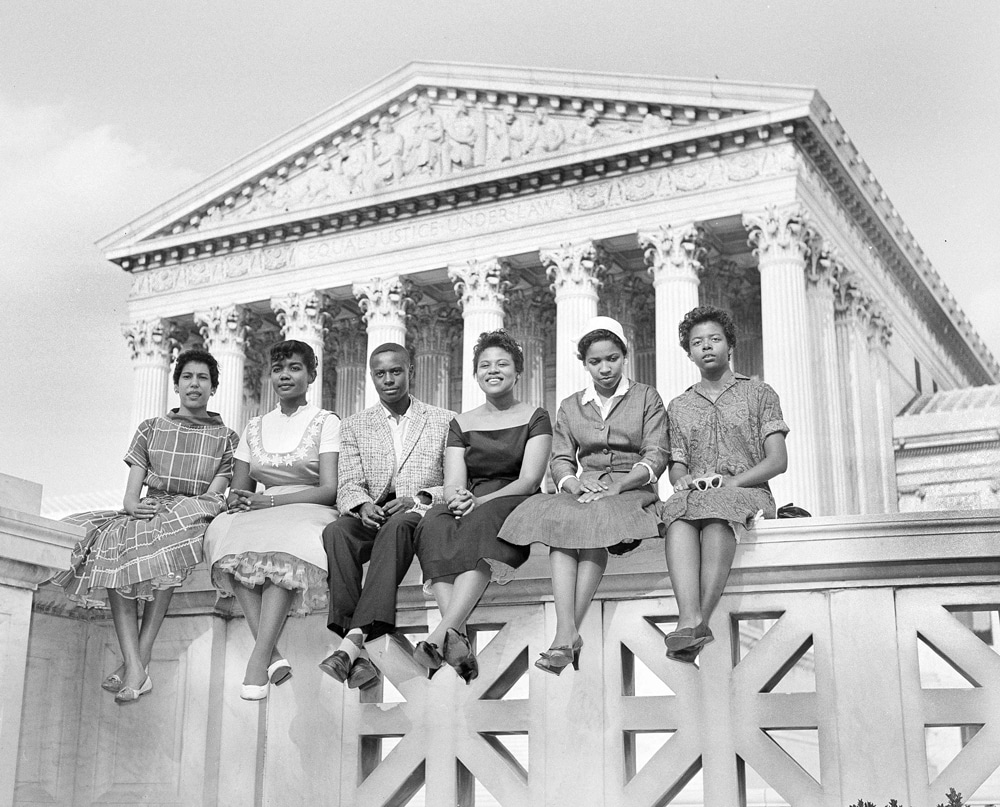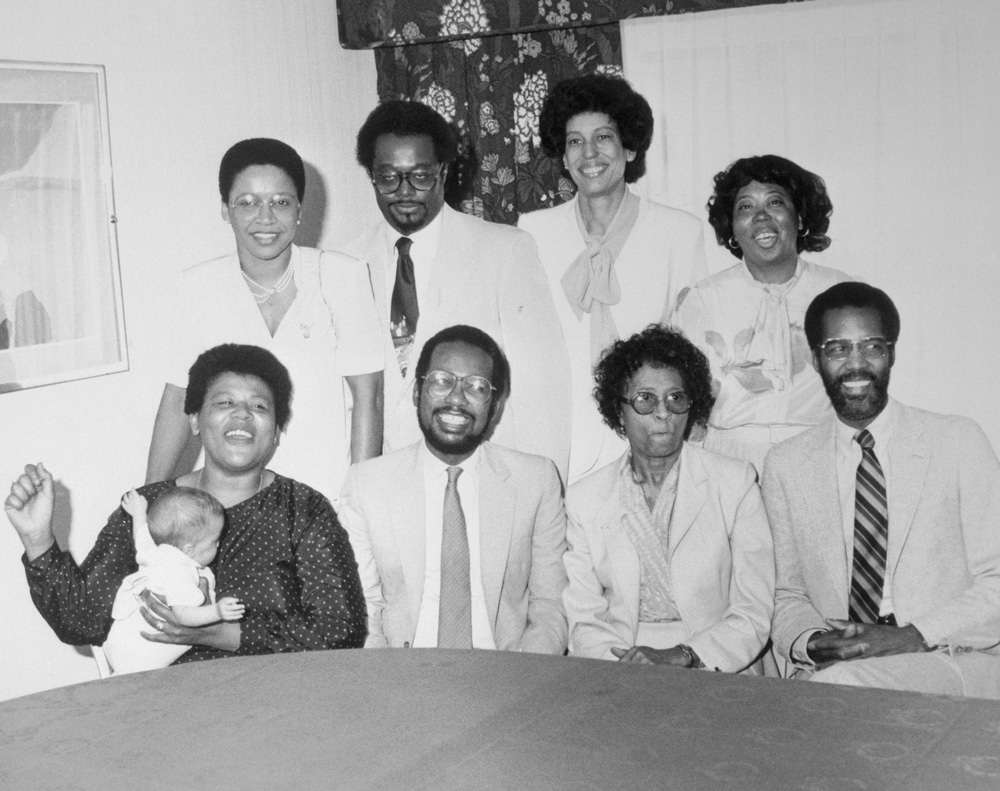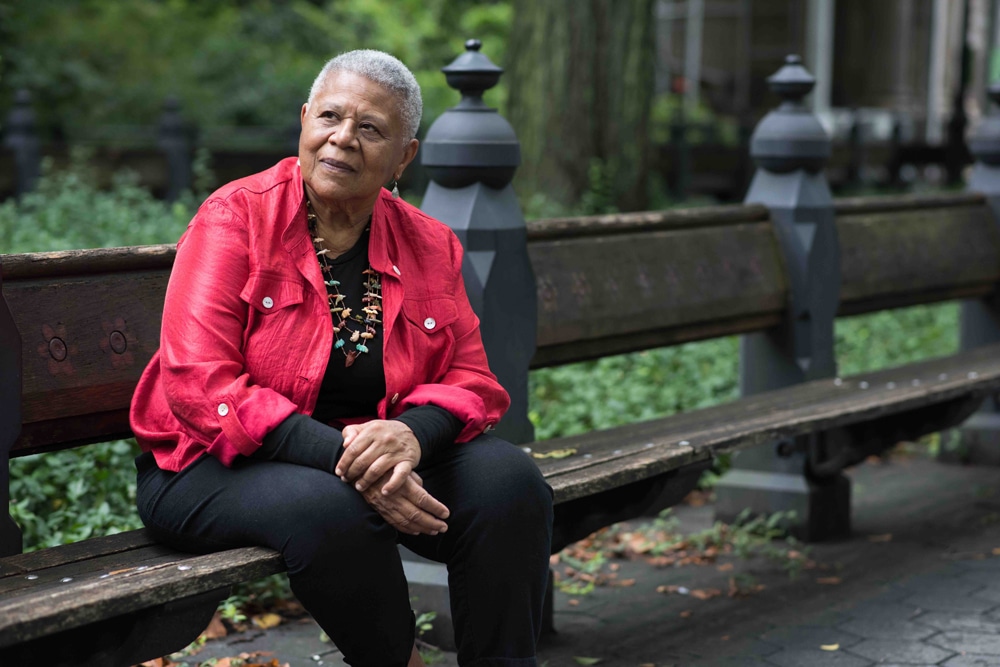Little Rock Nine: Decades-long battle for school equity began with nine Black students facing angry white mob
A group of white girls followed Minnijean Brown through the hallways of Central High School in Little Rock, Arkansas, stepping on her heels until they bled, spitting at her, telling her she stinks, saying she was ugly and calling her the N-word.
After nearly a week of this racist bullying, it finally went too far. As Brown was about to enter her homeroom, one of the girls threw a purse full of combination locks and struck her in the head. Responding to this painful assault, Brown threw down the purse and said, “Leave me alone, white trash.”
For that, she was expelled from school. The girls who attacked her suffered no consequence.
“The teacher didn’t see the purse thrown at my head,” Brown said. “The teacher did not see them following me, but she did hear me say, ‘Leave me alone, white trash.’ And that is the reason that I was expelled.”
The incident was one of many examples of physical, verbal and psychological abuse that Brown and eight other Black students constantly endured after integrating the previously all-white school on Sept. 25, 1957.
Brown, Elizabeth Eckford, Ernest Green, Thelma Mothershed, Melba Patillo, Gloria Ray, Terrence Roberts, Jefferson Thomas and Carlotta Walls are known today as the Little Rock Nine.
Three years after the U.S. Supreme Court outlawed school segregation in its 1954 Brown v. Board of Education decision, the Little Rock Nine’s enrollment at Central High School was the first major test of the federal government’s ability to enforce the ruling.
But 63 years later, schools around the country are still racially segregated, and deep inequities continue to plague America’s educational system. Schools in predominantly Black neighborhoods have fewer resources, fewer counselors and experienced educators and, overall, lack the level of educational opportunities found in schools in predominantly white neighborhoods.
Children of color are often caught in the “school-to-prison pipeline” – the destructive cycle of biased policies, practices and procedures that, directly or indirectly, push children out of schools in predominantly Black and Brown neighborhoods and into the criminal and immigrant justice systems – at much higher rates than white children.
“As we celebrate the bravery of the Little Rock Nine who knew they had the same right as everyone else to the best education that was available, and had the strength to walk through the most vitriolic manifestations of racist hatred and ignorance, we must never forget that we stand on the shoulders of children with giant, indomitable spirits,” said Bacardi Jackson, managing attorney for the Children’s Rights Practice Group at the Southern Poverty Law Center, which fights for racial equity in schools. “Like them, we have battles left to fight and principles to defend that are bigger than any of us.”
‘Take a strong forthright stand’
The images of the Little Rock Nine – particularly that of Eckford walking alone through a screaming mob of white people who shouted insults and threats at her – hurled the crisis into the nation’s living rooms and drew international attention to America’s struggle against racial injustice.
Sept. 4, 1957, should have been the first day of desegregated classes at Central High. But as the nine Black students walked toward the school, a crowd of angry white people chanted, “Two, four, six, eight, we ain’t gonna integrate,” and armed members of the Arkansas National Guard blocked them from entering the school.

Gov. Orval Faubus, an avid segregationist, argued that troops were necessary to prevent violence and bloodshed if Black students were allowed to desegregate the school. He had ordered the National Guard to form the blockade around the school’s front door to keep them out.

A team of NAACP lawyers, including Thurgood Marshall, challenged Faubus’ actions in court, and a federal judge ordered the National Guard to stand down 16 days later.
But the looming threat of mob violence continued to keep the Black students from enrolling.
Observing the standoff, the Rev. Martin Luther King Jr. sent a telegram to President Dwight D. Eisenhower, urging him to “take a strong forthright stand in the Little Rock situation.”
On Sept. 23, 1957, Eisenhower deployed 1,000 paratroopers from the Army’s elite 101st Airborne Division. Two days later, the Little Rock Nine attended classes for the first time, protected by federal troops and the Arkansas National Guard, which was now under federal orders.
The next fall, Faubus closed all Little Rock high schools rather than allow desegregation to continue. But he was rebuffed when a federal court struck down his order. In August 1959, Little Rock’s white high schools reopened with Black students in attendance.
“The Little Rock Nine served as a beacon of hope for the many activists who have followed in their footsteps and who have drawn inspiration from their courage and conviction in the face of violent opposition to continue the ongoing fight against racial injustice,” said Tafeni English, director of the Civil Rights Memorial Center, which is operated by the SPLC and includes interpretive exhibits about civil rights martyrs.
Bomb threats every day
Minnijean Brown’s decision to attend Central was simply a practical one, albeit profoundly important to the burgeoning civil rights movement.
Seeking to maintain its grasp on school segregation following the 1954 Brown v. Board of Education decision, the Little Rock School Board built a new school for Black students – Horace Mann High School – in the far eastern portion of the city where few people lived. The school board also built a new school for white students that was in the far western portion of the city.
Before entering Central, Brown attended segregated schools. She entered Horace Mann as a 10th-grader in 1956. The school was across town from where she lived and offered no bus service. But Central was in the middle of Little Rock, much closer to her home.
One day, an announcement came over the intercom at Horace Mann, asking students if they wanted to sign up to attend Central.
“Central was about 10 blocks from my house, and when they announced the possibility of desegregation, my two best friends and I said, ‘Oh, we’ll go there because we can walk together. It’ll be fun and we won’t have to trek to the other school,’” Brown said.

With advocacy from the NAACP, the school board approved about 80 Black students for transfer to Central the following year. But that number fell to 10 after the students were told that they could not participate in extracurricular activities and that their parents might lose their jobs.
And there was the looming threat of violence. The parents of the 10th Black student decided to withdraw her from Central after the mob scene that first day.
“So we get there and the National Guard won’t let us go in, and so we’re sandwiched between a mob of screaming white people, screaming hate and ‘kill them’ and ‘go back to,’ you know their usual little juvenile thing, mean-spirited,” Brown said, “and the Arkansas National Guard, who wouldn’t let us in.”
The Little Rock Nine would not enter the school for classes until three weeks later, following the NAACP’s court battles and Eisenhower’s decision to federalize the Arkansas National Guard and send in the 101st Airborne Division.
“Those are the toughest soldiers in the whole country, and they kept order,” she said. “They dispersed the mob.”
Inside the school, a soldier was assigned to protect each student. There were bomb threats every day. The lockers had to be checked each night to see if there were any explosives.
The Black students were safer in the hallways, but white students still found ways to harass and attack them.
In one incident, Brown’s body left an impression in a locker after a boy slammed her into it.
“There was a lot of spitting and dropping battery acid, so the Black students would get holes in their clothes,” she said.
She recalled a story from fellow Little Rock Nine student Melba Patillo about having acid splashed in her eyes, and the guard assigned to her quickly flushing them out.
“So any kind of disgusting hatred that you can imagine was in play,” Brown said.
‘American terror’
Other abuses happened in places where the guards weren’t allowed to go, particularly in the gym and the bathrooms.
White boys would hit Black boys with wet towels in the gym. They would also break glass on the shower floor and fill the room with steam so the Black boys could not see it and would cut their feet.
After the white girls took their showers, they somehow figured out a way to shut off the cold water for the Black girls, who got scalded.
“They hated the guards too,” Brown said, adding that the white students would insult the guards and call them traitors.
She described the situation as “American terror.”
Today, Brown, who changed her last name to Brown-Trickey and moved to Canada after getting married in 1967, has earned bachelor’s and master’s degrees in social work, has served under the Clinton administration as deputy assistant secretary for workforce diversity at the Department of the Interior, and is now a social justice activist.
She looks back on her expulsion from Central with a mixture of pride, anger and laughter. She frequently draws from her experience in Little Rock when advising young people today.
“That’s what I tell high school kids. Don’t do something when you’re 16, because it will follow you the rest of your life.”
The incident leading to her expulsion was not the first time she had gotten into trouble at the school. One day, two boys sitting on one side of a lunch table kicked the chairs on the other side, and the chairs slammed into her.
“I dropped the tray, the chili, the cutlery, the milk – everything – and it splattered on two boys,” she said.

She was sent to the girls’ vice principal, who asked her if she had dropped the tray on purpose. Fed up with the constant abuse from her white peers, she said, “accidentally on purpose” and was suspended.
“I really became a target after the chili. I think we were all targets.”
In August 1959, all the high schools in Little Rock reopened after being closed for the entire 1958-59 school year. Two of the original members of the Little Rock Nine, Carlotta Walls and Jefferson Thomas, re-entered the school that month. Frank Henderson, Sandra Johnson and Sybil Jordan were enrolled several weeks later after a federal court ruled that more Black students had to be admitted.
The experiences of the five Black students who attended Central after it reopened in 1959 were much different from those of 1957, according to Sybil Jordan, who changed her last name to Hampton after she got married.
Hampton, the youngest of the Black students at Central during that time, said white students did not physically attack the Black students and were mostly nonconfrontational as the desegregation struggle continued. By then, white students at Central mostly ignored the Black students, except when calling them the N-word or suggesting that they needed to go back to Africa, she said.
By 1959, white leaders in Little Rock were concerned about the negative attention the city had received around the world in newspapers and on radio and TV. The news coverage of angry white mobs and of the 101st Airborne Division being deployed in Little Rock two years earlier severely harmed the city’s image, Hampton said.
It was bad for the business and manufacturing community in town, and discouraged people from moving to the city, she explained.
“Television was in its infancy and rapidly gaining popularity then. So the Little Rock Central crisis was like the shot heard round the world. Little Rock was seen as a place that was worse than Mississippi.”
Hampton believed that white Central students were taking a cue from city leaders and their parents when they changed the resistance from physical and verbal attacks against Black students to shunning and isolating them.
“It was clear to me that a different message had been sent in the community, and the message was that Little Rock will no longer be the poster child for riots and destruction in its streets,” she said.
Hampton, who earned a bachelor’s degree in English from Earlham College, a master’s degree in teaching from the University of Chicago, and master’s and doctorate degrees in education from Teachers College at Columbia University, draws from her extensive educational background as a consultant with foundations, nonprofits and universities.
The three years at Central were taxing and difficult for Hampton, but she was able to build on the excellent educational foundation she had received at her all-Black elementary and junior high schools.
The positive reinforcement and the will to keep striving for academic excellence against incredible odds in an overtly hostile high school environment came from home, church and the larger beloved Black community, she said.
“We were being coached and groomed to be confident young students who could go out into a world where we would be ‘buked and scorned’ because of the color of our skin, but we would not give up; we would be resilient.”
That’s a lesson for today’s young Black people, she said.
‘Thank you for keeping me safe’
It’s important for young Black people to keep hope alive today against the persistent racial inequities in the educational system, said Jackson, the SPLC managing attorney.

“I have found hope in the powerful voices of broad coalitions of young people who are well-informed and enraged by these inequities and who, once again, are at the forefront of organizing, protesting, and advocating for justice and liberation,” Jackson said. “It is our job to clear the path and make sure they are heard in every hall and chamber of power.”
Recently, Brown-Trickey reunited on Facebook with the white soldier who guarded her in the hallways of Central more than 60 years earlier.
At the time, Black soldiers were not allowed in the school – and Black students could not speak with the white soldiers who protected them.
“He said, ‘You dropped me a note that says, ‘Thank you for keeping me safe,’ and I’ve kept it all this time.’”
Lead photo by A. Y. Owen/Getty Images

